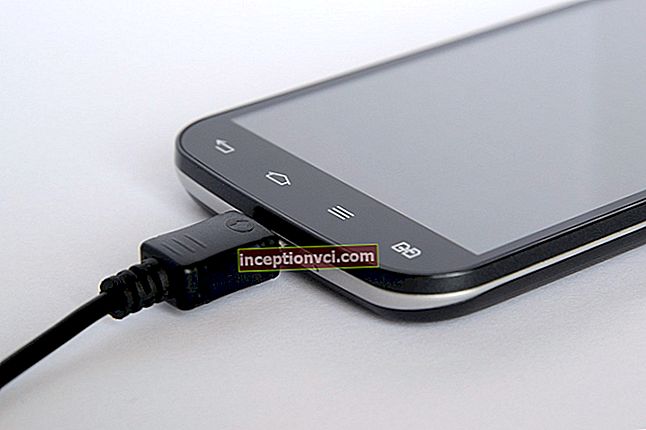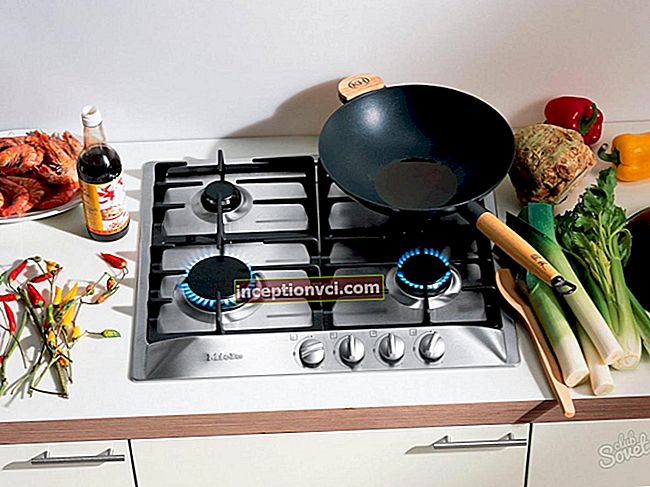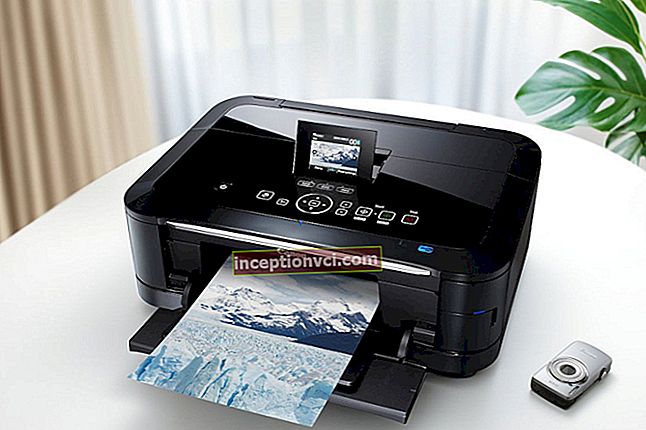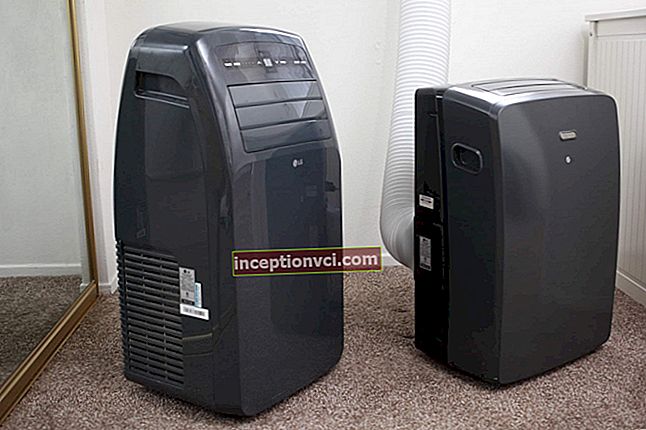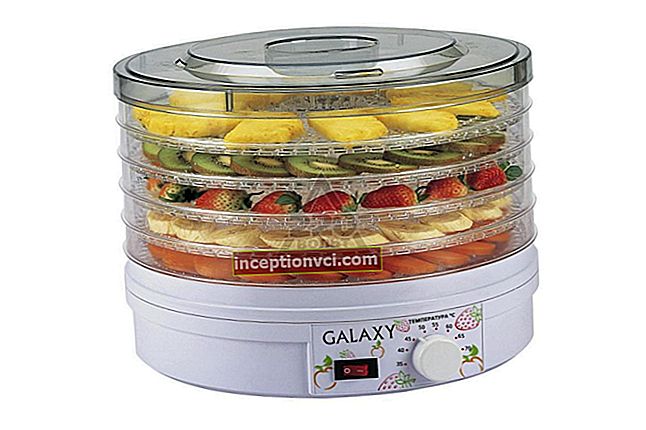The Japanese company Sony today is one of the largest manufacturers of mirrorless (or so-called system) cameras in the world. In just a few years, Sony system cameras in their segment have become some of the best and most recognizable cameras on the market. Until recently, Sony's line of mirrorless cameras was called “Alpha NEX” or simply “NEX”, but at the end of 2013 they decided to abandon the word “NEX” in the name for some reason. Now all new system devices come simply with the letter “A” in the name (for example, A3000, A5000, A6000), which means “Alpha”. Actually, the Sony A5000 system camera was presented to the general public for the first time at the CES 2014 World Exhibition of Consumer Electronics, held in January 2014 in the USA. In fact, the device is a replacement for the NEX-3N, although Sony marketers are positioning it between the Alpha A3000, presented a little earlier, and the NEX-5T.
The first thing that surprises the Sony A5000 is its very compact size. Sony said in a press release that the A5000 was the world's smallest and lightest mirrorless camera with built-in flash at the time of its launch. The technical part of the Sony A5000 is also good news. So, the camera is equipped with a large Exmor APS HD CMOS sensor with a resolution of 20.1 megapixels, a modern BIONZ X graphics processor, an E-mount, a 3-inch LCD screen that rotates 180 degrees, a pair of stereo microphones, microHDMI and USB ports, a built-in pop-up flash, Wi-Fi module (with NFC support) for fast data exchange, replaceable battery. The Sony A5000 camera is equipped with a 25-point contrast AF system, a 1200-point exposure metering system, and can take photos in both JPEG and RAW formats. Video filming here is carried out in progressive AVCHD format in full Full HD resolution.
The Sony A5000 camera appeared on sale in Ukraine in the spring of 2014. The device is already available in black, white and silver body colors. All the primary colors, which are usually used to decorate cameras, are used by designers. Although, given that the camera belongs to the middle price range, it might have been worth making the device in some fourth color scheme (for example, red).
If 2-3 years ago the number of system cameras on the market could be counted on the fingers of both hands, then in 2014 the range and, as a result, the competition between manufacturers in this segment of digital photographic equipment is already starting to go off scale. For example, cameras such as Nikon 1 V2, Olympus E-PM2, Fujifilm FinePix X-A1, Panasonic DMC-GF6, Samsung NX-300 and others can compete with Sony A5000.
Acquaintance
Claiming the Sony A5000 as the smallest system camera in the world is, of course, controversial, but the fact that it is definitely Sony's smallest mirrorless camera cannot be denied. In terms of its size, the device under review is slightly larger than the top compact Sony Cyber-shot RX 100 II camera. But this, of course, does not include the removable lens. See for yourself, the width of the Sony A5000 is about 110 millimeters, and the thickness is almost 35 millimeters. At the same time, the weight of the camera complete with a battery and a memory card (but without a lens) is about 270 grams. Of course, in this state, the camera will easily fit in a shirt or trouser pocket, where it will not interfere. But as soon as you attach a lens to the camera, its weight will immediately increase by 100 grams or more (depending on the type of lens, for example, with a whale weight of about 380 grams). Not to mention that because of the lens, the dimensions will increase, which means that you can't put a camera in your pocket. In this case, operation will be facilitated by the supplied shoulder strap or some kind of bag. The design of the Sony A5000 is made in the corporate style of the cameras of the NEX family. We can say that the appearance of the novelty is a kind of symbiosis of the designs of the NEX-3N and NEX-5T cameras.The compact body of the A5000 features a massive bayonet mount and a wide, ergonomic grip on the right side. This handle provides a comfortable grip and, thanks to the grooved surface, allows you to securely hold the camera in your hand. Even in spite of the small size of the camera, the ergonomics remain comfortable. You can also hold the camera with your left hand by the lens. The Sony A5000 case is made of plastic (that is why it is so light), but this plastic is quite durable. Its surface is matte, because dirt, fingerprints do not linger on the surface, and it does not slip in the hand. The case is resistant to mechanical damage (within reason, of course). In general, the aesthetic feeling from the camera is the most positive.
The new mirrorless camera is equipped with a new sensor. This is an Exmor APS HD CMOS sensor in APS-C format (23.2 x 15.4 mm). Its novelty, first of all, is that it uses a high effective resolution of 20.1 megapixels (16-megapixel sensors were installed on the latest cameras of the NEX family). APS-C is the traditional physical size of Sony system camera sensors. It is larger than the sensors used on Nikon (CX) or Olympus and Panasonic (Micro 4/3 ") mirrorless cameras. By the way, APS-C sensors are used on amateur and semi-professional SLR cameras. The quality of the image obtained from such sensors is beyond doubt Thanks to such a matrix, in particular, it turns out to take a photo with a blurred background.To transform and process digital data that comes from the matrix, an updated improved graphics processor Bionz X is used. By the way, the same is used on the company's premium cameras - Sony Alpha A7 and Sony RX10. The processor is capable of processing large amounts of data, suppressing various noise and improving the quality of the resulting picture. It is thanks to the powerful image processing system that the camera is able to shoot AVCHD clips in resolution up to Full HD.

The camera traditionally uses an E-mount with a 10-pin interface, specially developed for the mirrorless system by Sony specialists. Undoubtedly, an important factor when choosing a system camera is the available fleet of branded lenses. With this, Sony is in complete order. So, as of 2014, there are:
- -10 different zoom lenses, including whale, tele / photozoom, etc. For example, 70-200 mm f / 2.8, 10-18 mm f / 4, PZ 16-50 mm f / 3.5-5.6, 18-200 mm f / 3.5-6.3, etc.
- -5 different prime lenses, including 16 mm f / 2.8, 50 mm f / 1.8, 35 mm f / 1.8, 20 mm f / 2.8, etc.
- -Macro lens 30mm f / 3.5 Macro Lens.
- -5 lenses created in partnership with the legendary German company Carl Zeiss. They are distinguished by the highest quality optics and assembly. These are Sonnar T * 24 mm F / 1.8, Vario-Tessar T * E 16-70 mm F / 4, Sonnar T * FE 55 mm F / 1.8 ZA, Sonnar T * FE 35 mm F / 2.8, Vario-Tessar T * E 24-70 mm F / 4.
- -compatible lenses from Sigma and Tamron.
At the same time, the fleet of E-mount lenses is constantly expanding. Sony also produces various adapters and assemblies for A-mount lenses, of which there are several dozen in the company's arsenal. In addition, there are various adapters on the market that allow you to install lenses with other mounts (for example, Canon EF, Contax, Leica, Micro 4: 3, Nikon, Pentax, old Soviet types M42, M39, etc.). Thus, there will be no problems with compatible lenses at all.
All Sony branded lenses are of excellent quality, they are made of metal, durable plastic, and have rubber elements. Whale lenses can also have several types of color schemes. The Sony A5000 can be supplied either as a body (camera only) or as a kit with a kit or other Sony lens. For example, we included a PZ 16-50 mm f / 3.5-5.6 lens with an electromechanical Power Zoom and a built-in stabilization system. The lens is universal, suitable for almost any type of shooting. During operation, you yourself will understand what additional lens or lenses you need.
On the front panel, in addition to the bayonet mount, only an autofocus illumination lamp and a lens unlock button are installed.
On the top of the camera, you can see the power switch, shutter button, zoom lever, two stereo microphones, focal plane mark, video recording button, built-in flash and a button to activate it.The flash jumps out from under the surface of the top panel after pressing the corresponding button. The flash power is sufficient to shoot at a distance of 6-7 meters. You can shoot without a flash at all, or using auto, fill, slow sync, rear-curtain sync, etc. There is no “hot shoe” for attaching external flashes.
There is one metal eyelet on each side of the camera for attaching the shoulder strap brackets. There are also the bolts connecting the body elements. In addition, an NFC module (for touch) is located just below the surface of the right panel. On the left panel, the manufacturer has placed a large compartment that combines USB / A / V and HDMI ports, a charging indicator, and a slot for a memory card. The compartment is tightly covered with a wide plastic cover, which prevents the ingress of dust and moisture. Most modern Sony cameras support Memory Stick (PRO Duo, XC-HG Duo, PRO-HG Duo) and SD (SDHC, SDXC) memory cards. You can use cards up to 64 GB. For example, a regular 4GB card can easily hold about 500 JPEG photos (170 RAW photos) or a 20-minute AVCHD movie in Full HD resolution. It is also possible to use Eye-Fi cards with a wireless chip.
There are no more elements on the back of the camera than on a conventional compact camera. Here are located:
- -button "Play";
- -button "Menu";
- -button "Help / Delete";
- -rotary multi selector for navigation with buttons "OK", "Down / Exposure compensation /", "Left / Self-timer / Burst", "Right / ISO", "Up / Disp".
- -Turning LCD screen with an aspect ratio of 16: 9. This display, as a whole, leaves a pleasant impression. It is large (diagonal as much as 3 inches), perfectly reflects colors, has excellent contrast. The screen has a good brightness, which, by the way, can be adjusted manually. When direct sunlight hits the screen, the picture is normally visible. The display can be rotated along the horizontal axis up to 180 degrees, achieving the most comfortable viewing angle. Thus, even self-portraits can be taken. The main disadvantage of the screen is that it has a very low (as for a modern camera of this price category) resolution of 460,000 pixels. Display touch control is not supported.
At the bottom of the camera there are 3 bolts connecting the body elements and 2 bolts connecting the display panels, as well as a metal tripod connector, 2 information stickers (QR code, serial number, etc.) and a lid with a lock that covers the battery compartment. The battery here is lithium-ion, has a capacity of 1080 mAh. According to the CIPA rating, a full charge should be enough for 420 shots (with an economical approach, it may be enough for a larger number). You need to charge the battery using the power adapter, the charging time is about 3.5-4 hours.
_ ** The standard set contains: ** _ camera, battery pack, charger, power cord, USB cable, branded shoulder strap, 1 or 2 lenses (or no lenses if body version), software disc, user manual, warranty card, advertising brochure. Additional branded accessories include stylish lenses, cases, an external mount for accessories, adapters, adapters for other lenses, etc. There are also many non-branded accessories (cases, optics cleaners, bags, tripods, etc.). The Sony A5000 camera is made in Thailand, which should please opponents of the Chinese assembly.
To fully use the camera (with the correct operation of all its functions), you need to set some important parameters after the first start. This is, first of all, language, date and time (as well as their format), time zone. The main menu is very simple and logical, the graphical interface itself is nice. The menu consists of 6 main sections: “Shooting Settings”, “User Settings”, “Wireless”, “Application”, “Playback”, “Settings”.
As you have already noticed, there is no dial on the top panel with which you could switch shooting modes. The modes are controlled through the camera menu in the “Shooting settings” section. You can choose one of 9 suggested modes:
- - "Intelligent Auto" is the simplest automatic mode and is recommended for normal shooting conditions. The camera makes all the settings and automatically recognizes the scene for the current shooting conditions. The mode is simple and understandable even for a beginner.
- - "Super Auto" - advanced automatic mode. Use for taking pictures in difficult conditions (such as poor lighting or backlighting of the subject). Even continuous shooting can be activated immediately. In this mode, you can also create a composite image (1 image from multiple photos). Thus, in the "Super Auto" mode, you can get a higher quality photo.
- - "P" - programmed autoexposure.
- - "S" - shutter speed setting.
- - "A" - aperture setting.
- - "M" - manual exposure.
- - "SCN" - scene mode. Consists of several scene programs with ready-made settings that are optimized for specific shooting conditions. Actually, by the title of the plot, it is easy to understand for what conditions a particular plot is needed. For example, Portrait (blur background, soften skin tones), Sports (shoot moving subjects), Sunset (saturate red tones), Macro (close-up), Night portrait, Eliminate motion blur "(shooting indoors without using a flash), etc.
- - "Panoramic view". The mode allows you to shoot wide-angle panoramic images. They are created by arranging several consecutive standard photographs. The camera itself composes the panorama, transfer pictures to the computer. You do not need to use special software here.
- - "Video" - video mode. We'll talk about it in more detail below.
You can get to the photo and video preview menu in two ways: using the "Play" button on the back of the camera or using the "Play" item in the main menu. A distinctive feature of Sony cameras is the separate grouping for playback of photo files, AVCHD video files and MP4 files. Files are displayed either full frame or thumbnails (12 or 30 per display). Pictures can also be viewed as a slide show. You can enlarge photos to view small ones. When viewing a full-screen image, you can display detailed information about the photo (aperture, white balance, ISO, shutter speed, etc.) and histogram. From this menu, you can select the pictures you want and send them to print. Photos can also be edited (rotated, cropped). When playing videos, you can rewind to the point you want, play the recording in slow motion. You can transfer all photo and video files to another medium, delete or protect from deletion.
In the “Settings” menu it is proposed to set the basic parameters of the camera. For example, here you can adjust the brightness of the display (and even activate a special screen mode for shooting in sunny weather), volume of sounds (sound level during playback and volume of camera system sounds), parameters of the Eye-Fi card, display of a mosaic menu. Here you can also activate the power saving mode, set up USB, HDMI connections, set the language, date and time, time zone, file numbering, create folders, format the memory card, view the camera firmware version, restore factory settings, etc.
Of course, the camera is equipped with many advanced features that come in handy for both photography and video filming. It is worth highlighting the following functions:
- -Optical (depends on the lens), intelligent (up to 2x) and digital zoom (up to 8x).
- -Increase the clarity of the image.
- -BULB - long exposure mode.
- -Red-eye reduction.
- - Flash exposure compensation.
- -Single and continuous autofocus.
- -Manual focusing.
- -Direct (manual + auto) focusing.
- -Focus area selection.
- -Focus / exposure lock.
- -Magnification of the focus area.
- - Highlighting contours in color when focusing.
- -Tracking autofocus.
- -Focusing illumination.
- -Measuring the exact distance to the object.
- -Selecting the type of metering.
- -Adjust the brightness level (zebra).
- - Broaching mode. Functions in several sub-modes: Continuous Shooting, Speed Priority (faster shooting speed), Self-timer (10 or 2 second delay to release), Continuous Self-timer (continuous shooting after 10 seconds delay), BRK C ”(Continuous bracketing),“ BRK S ”(number of shots bracketing),“ BRK WB ”(white balance bracketing),“ BRK DRO ”(dynamic range optimized bracketing).
- -A self-portrait.
- -Manual ISO sensitivity control.
- -Manual white balance adjustment.
- -Manually adjust saturation.
- -Manually adjust the contrast.
- -Manual adjustment of sharpness.
- -DRO - dynamic range optimization.
- -HDR - High Dynamic Range.
- -Special effects. They allow you to process photographs using color filters: “Cheap camera” (creating an image with shaded corners and reduced brightness), “Schematization” (high-contrast picture), “Retro” (effect of an old photo), “Color extraction” (retaining only the selected color, other colors are black and white), “Soft focus”, “HDR Painting”, “Miniature”, “Watercolor” (the image looks like it was painted with watercolors), etc.
- -Creative style. The function allows you to select the color scheme of the image. For example, “Standard”, “Vivid”, “Sepia”, “Black & White”, etc.
- -Selection of color space.
- - Identification and registration of persons.
- -Capture a smile.
- -Record date and time on the picture.
- -Noise suppression.
- -Shading correction.
- -Correction of chromatic aberrations.
- -Correction of distortion.
- -Direct photo printing.
- -Flight mode (turns off wireless connections).
Shooting
The camera turns on quickly. Just a couple of seconds after pressing the power lever, the Sony A5000 is ready for you. Unlike more expensive modern cameras equipped with hybrid focusing systems (for example, the Sony A6000), the device we are considering has a conventional contrast autofocus system. You can focus on 25 points. Focusing can be carried out both in automatic and manual modes, and in combined. In manual mode, various auxiliary functions will come to the rescue. In general, the focusing system functions fairly accurately and quickly. Some inaccuracies may occur in tracking focus mode. When using a whale lens, the camera focuses on average in 0.2-0.4 seconds, which is in the wide-angle position of the lens. When shooting in a dark room or twilight, the focusing time may be longer. By the way, when zooming, the front of the lens extends forward by about 2 centimeters. The shooting speed (whale lens) without a flash is about 1.2-1.4 frames per second, with a flash - 0.8-0.9 frames per second. You can squeeze the most out of the camera in burst modes. For example, at full resolution in JPEG or RAW formats, the Sony A5000 shoots at about 3.5-4 frames per second. We believe that this performance is sufficient.
You can take photos in RAW file formats (digital processing by means of a camera is not performed, you need to process photos on a computer) and JPEG (processing by means of a camera, you can choose 2 types of file compression). You can also shoot in RAW + JPEG at the same time. It is proposed to shoot photos with aspect ratios 3: 2 and 16: 9. The following resolutions will be available to you: “L” (5456x3632 and 5456x3064 pixels), “M” (3872x2576 and 3872x2176 pixels) and “S” (2736x1824 and 2736x1536 pixels). For example, photos with “L” type resolutions can be printed on paper of any size up to A1 / A2, with “M” resolutions - on paper of any size up to A3, with “S” type resolutions - on paper of any size up to A4 / A5 and less.
In operation, the Sony A5000 leaves an ambivalent feeling. On the one hand, the camera can do a lot.So, it is equipped with both automatic (two auto modes, scene programs) and manual shooting modes, has a lot of useful functions and auxiliary modes (continuous shooting, HDR, bracketing, panorama shooting, etc.), and can even shoot in RAW format. Those. theoretically, the device can meet the needs of both amateurs and professionals. But in practice, for the pros, the Sony A5000 camera will still not be very convenient. it lacks connectors for attaching external accessories (you will not be able to use flash units, etc.), and manual control is not very developed here (for example, there are no function control dials, dedicated programmable buttons, etc.). Therefore, we believe that the camera is more focused on advanced amateurs. Separately, it should be noted that the Sony A5000 has a large number of interesting special effects and color schemes that will help you get an unusual picture without resorting to photo processing on a personal computer. There are no complaints about the quality of the photos. Even when shooting with a whale lens, there is nothing to complain about. The quality is the same as on crop sensor DSLRs. The pictures are distinguished by realistic color reproduction, good clarity. White balance and exposure are adjusted correctly even in auto modes. To combat all kinds of chromatic aberration and distortion, the camera has special features.
Noise and night photographyThe Sony A5000 sensor has a fairly wide range of sensitivity, allowing you to shoot excellent quality photos in different lighting levels. This was achieved thanks to a high-tech matrix and a powerful processor. So, the sensitivity of the sensor of the camera under consideration varies in the range of ISO 100-16000. The setting is carried out both in automatic mode and in manual according to ISO positions 100/125/160/200/250/320/400/500/640/800/1000/1250/1600/2000/2500/3200/4000/5000 / 6400/8000/10000/12800/16000). The quality of pictures taken within ISO 100-1600 raises no objections. Some signs of noise already become noticeable at ISO 3200 and ISO 6400. But at ISO 12800 and ISO 16000 there is much more noise and color distortion, so the photo quality can be poor. Use the last 2 values as sparingly as possible.
The Sony A5000 camera may well prove to be a good tool for night photography. So, the maximum exposure here is 30 seconds, but there is also a Bulb mode, which allows you to use longer exposures. Those. by controlling the exposure parameters, you can achieve good image quality. Also, for photography in the evening and at night, you can use special scene programs, HDR and bracketing modes, and others.
Using Wi-FiAs you already understood, the A5000 camera is equipped with Wi-Fi and NFC modules. The latter is useful for setting up a wireless connection with a simple touch (in this case, you do not need to enter the network password). The camera quickly finds available networks within range. You can download various applications (PlayMemories Camera Apps) to the camera via the Internet to help you take and edit photos. Standard functions for transferring files to a smartphone, tablet or computer are also available. You need to install the special PlayMemories application on your smartphone, which will allow you not only to transfer information, but also to control the camera.
Shooting videoLike cameras from the NEX family, the device in question can shoot video in two formats: AVCHD (for playback on high-definition panels) and MP4 (for viewing on a PC or uploading to the Internet). The following options are provided for the AVCHD format:
- -FX - 1920 x 1080 pixels (16: 9), 60 or 50 frames per second, bit rate 24 or 17 Mbps.
- -FH - 1920 x 1080 pixels (16: 9), 25 or 24 frames per second, bit rate 24 or 17 Mbps.
The following options are provided for the AVCHD format:
- -1440 - 1440x1080 pixels, bitrate 12 Mbps.
- -VGA - 640x480 pixels (4: 3), bit rate 3 Mbps.
The sound for video is recorded in stereo format; there is a noise filter to suppress distortion. Autofocus supported. If you are using a zoom lens with stabilizer, then, of course, you can use the optical zoom, the stabilization system is active.Via USB / A / V or HDMI interfaces, the camera can be directly connected to a TV or media center
Final verdict
The pros:- • compact dimensions, comparable to a conventional camera;
- • good build quality;
- • large matrix Exmor HD CMOS with a resolution of 20 megapixels and physical size APS-C, like a DSLR;
- • modern graphic processor BIONZ X;
- • simple control;
- • 1 or 2 lenses included;
- • wide range of E-mount lenses;
- • compatible with lenses Sony A (adapter required);
- • you can use lenses of various systems through an adapter;
- • ports HDMI and USB;
- • built-in flash;
- • 3-inch swivel screen;
- • Wi-Fi + NFC modules;
- • Sony PlayMemories Apps can be installed;
- • stereo microphones;
- • 2 auto modes, scene programs, special effects, panorama shooting modes and continuous shooting;
- • manual modes P, S, A, M, HDR, DRO, bracketing modes;
- • you can take photos in JPEG and RAW;
- • you can shoot video in AVCHD (in full Full HD resolution) and MP4;
- • high price;
- • it is not possible to use external accessories (flashes, etc.);
- • there is no dedicated disk for modes;
- • special effects are available only when shooting in JPEG format;
As a result, it turns out that the Sony A5000 is an advanced and functional camera, created for amateurs and enthusiasts (a little more advanced photographers). For professionals and semi-pros, this device will not be very convenient, tk. restricts the use of external accessories. The rest of the Sony A5000 may well compete with DSLRs.


